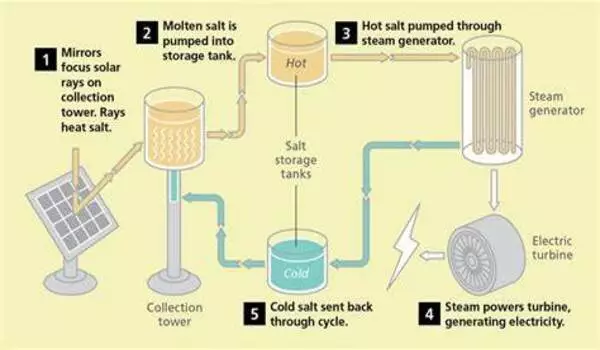Salt batteries can store summer heat for use in the winter, but which salt is best? Lian Blijlevens will defend her PhD thesis on salt for heat storage at Radboud University on December 19.
Although solar panels are appearing on an increasing number of roofs, these panels only convert sunlight into electricity. The sun heats the solar panels as well, but this heat is now being lost. “The heat can be extracted by a solar boiler and used to heat your house or shower,” says Blijlevens. However, you always generate more solar heat than you use in the summer, and you have less in the winter. So we need a way to keep that heat going.
Salt hydrates, which are salts with water in the crystals, are used in salt batteries. The battery is recharged by heating the salt, which causes the water in the crystals to evaporate. When you need heat, simply add water vapour to the crystals, and the heat is released once more.
Lian Blijlevens
Salt battery
However, storing summer heat for use in the winter is difficult. And the solution may take an unusual form: salt. Not the salt you sprinkle on your eggs, but a different kind of salt, like strontium chloride. “Salt hydrates, which are salts with water in the crystals, are used in salt batteries. The battery is recharged by heating the salt, which causes the water in the crystals to evaporate. When you need heat, simply add water vapour to the crystals, and the heat is released once more.”
This was already known, but it was not clear which salts were truly suitable for use in homes. Blijlevens and her colleagues at Eindhoven University of Technology evaluated hundreds of salts based on their availability, safety, and compactness. The dozen or so salts that made it through the initial assessment were then tested in the lab for recyclability. The researcher: “You don’t want to have to replace the salt every year.”

Heated scales
Blijlevens used thermal analysis to test the salts: the salt was placed on heated scales and the temperature was increased. “You can see the weight of the salt change, indicating that water is evaporating out of it.” When you add water vapour again at a lower temperature, you can see how much water is absorbed.”
Strontium chloride has proven to be a promising candidate in this regard: it is not too expensive, heats up quickly, and remains stable without side effects. Potassium carbonate, which is also used in salt batteries, is less expensive, but it also reacts with CO2. In the long run, this reduces the battery’s effectiveness.” The hunt for the best salt continues.
Two wardrobes
The future looks promising for salt batteries, Blijlevens believes. “If you want to heat a house this way, you need about 10m3 of material, which corresponds to two to three wardrobes. You no longer need natural gas and you can use the heat you store in summer in winter. It’s a great solution to a major problem.”
















